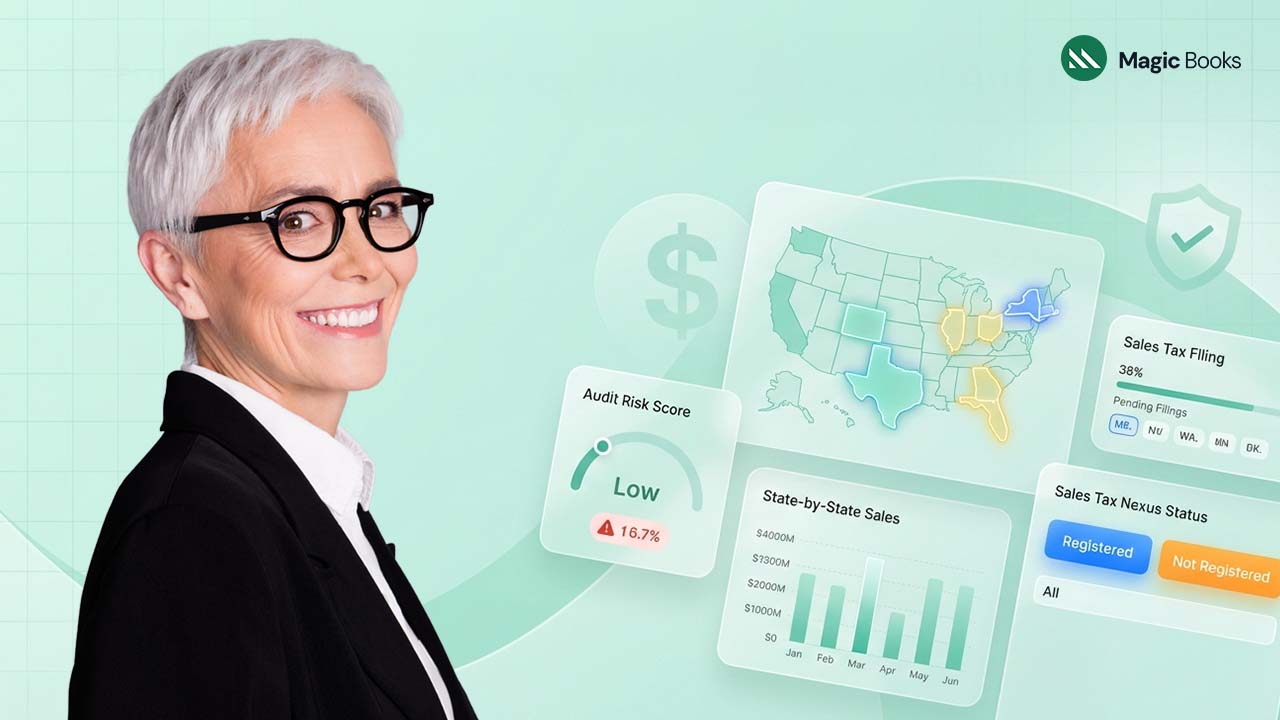In the current economic climate of constant change, characterized by swift market changes and increasing competition, effective credit management has never been more critical to businesses in the United States. Whether a small business owner is looking to stabilize cash flow or a large business is interested in improving financial performance across several regions, a well-developed strategy for credit management can significantly strengthen financial well-being and provide avenues for growth. This guide covers the entire credit management lifecycle, from defining customers with a credit application, establishing clear terms of credit, proactively monitoring accounts receivable, requesting payment on past due accounts, and using technology to work this process. With examples and details, this article will serve as a credible resource demonstrating how a thoughtful credit strategy will reduce bad debt, reduce late fees and penalties, improve forecasting, and free up cash for future investment—all the while overcoming challenges associated with businesses of any size.
A properly thought-out credit management plan is at the core of managing cash flow. It is a methodical process of assessing potential clients, establishing credit limits, tracking receivables, and following up on overdue balances. The risks and opportunities that come with extending credit change as businesses change. Today, technology and advanced analytics provide the ability to not only assess risk in real time with unprecedented accuracy but also automate redundant activities to change credit management from a reactive administrative process to an actionable strategic advantage. This guide offers businesses the information and tools to develop solid credit practices to sustain and grow their business to lower financial risk, and improve overall profitability.
Customer Credit Assessment:
Effective credit management starts with a holistic evaluation of the current and potential customers’ credit profiles. These steps inform the rationale for every credit decision and risk management approach you will adopt:
- Prior to issuing any form of credit, it is vital to obtain detailed information about a customer’s payment record, financial statements, and risk factors associated with the industry. Historical data provided by traditional credit reports give one a look-back position on trends and even potential triggers for concern, such as frequent late payments and high levels of outstanding debt.
- Modern credit assessment methods move beyond traditional credit reports and offer more flexible solutions with the integration of real-time information and predictive analytics. These reports identify trends in purchasing history, cash flow volatility, and lack of external market support, enabling a more thorough perspective on a customer’s likelihood to fulfill future obligations.
- In addition to understanding individual customer patterns, effective credit management requires a grasp of broader trends and economic indicators aligned with the industry. For example, organizations in industries that are subject to seasonal peaks or fluctuations during economic downturns may consider adopting a more cautious position with the customer’s credit limits.
- By trying to understand macroeconomic data and industry-related information, organizations can enhance their own risk models and make better-informed choices. This risk-based thinking enables organizations to mitigate against bad debts while also creating a robust credit book to support long-term growth.
Establishing Clear and Enforceable Credit Terms:
Once a customer’s creditworthiness has been evaluated, the next step is to create clear, enforceable credit terms, which will define the parameters of the credit relationship. These steps is essential in managing expectations, mitigating risk, and ensuring mutual understanding of obligations:
- Each business has specific needs, which makes a one-size-fits-all approach to credit terms inefficient; for small businesses, the focus will be on simplicity and speed, but for larger businesses, more complex tiered credit terms may be required to address considerably varied customer needs and regional regulatory differences.
- Specific credit policies should include payment deadlines, interest to be charged on overdue balances, and other penalties for non-compliance. However, when credit policies are conveyed in clear terms to customers, they create a substrate of accountability and trust.
- An unambiguous credit policy serves as not only a risk management strategy but also as a protective legal measure. Written confirmation of the consequences for late or nonpayment, policies for dispute resolution, and any rights to recoup your expenses related to collection all safeguard the business.
- Legal enforcement becomes even more important for larger businesses with extensive and complex accounts receivable, as inconsistent credit terms can lead to substantial financial exposure. Legal reinforcement and consistent policy applications will reduce the chances for disputes and litigation while allowing the business to retain its rights.
Proactive Monitoring of Accounts Receivable:
After credit is granted, keeping an eye on accounts receivable is key to ensuring that cash flow remains healthy. Continuous monitoring enables companies to detect and seek resolution for issues before they become major financial issues. With the introduction of the digital age, traditional tracking methods are no longer appropriate. Businesses modernized tracking methods with dashboards reflecting real time customer payments, able to spot unusual payments and predictive analytics. With technology, businesses can set reminders for customers when accounts go overdue, plus data on how segments of customers provide payment. These real-time data can provide managers actions that can effectively address future risk in a timely fashion. Continuous monitoring is always more effective as part of a larger, more systematic follow-up process. Systems should include reminders, the follow-up process and an escalation policy to their follow-up practice. As an example, a tiered follow-up system would have a friendly reminder as soon as a payment is missed, a formal notice after a period of time, until a point where collections gets involved for non-responsive customers. This structured process ultimately keeps communication open so at risk cash flow is managed before late payments occur.
Diligent and Tactful Pursuit of Overdue Payments:
A good recovery of tardy overdue payments means that you need to balance persistence against customer sensitivity. Of course, businesses need to pursue the collection of funds diligently while preserving long-term relationships and brand equity. Successful collections really boil down to communicating effectively with the customer. Instead of pursuing a kind of war of attrition, the business may want to take the time to understand why the customer has not paid the obligation. In many cases, the customer is not unwilling but is faced with either cash flow issues or issues relating to administration. Resolving the issue through communication can include compassion for the customer’s plight, payment options to help them resolve the situation, and clearly articulating the consequences for there being any further delay. During the process, this can strengthen the relationship and lead to a quicker resolution. Once internal efforts do not lead to the recovery of the overdue payments, using a collection bureau or professional is often required. A collection agency has professional collectors who will work on behalf of the business to collect the debt without escalating the situation to any conflict. However, a business does need to weigh the costs and expenses with these types of options for debt recovery and what it may do to goodwill with the customer. Ultimately, at times, you have to turn to legal action, but remember this should be a last option because litigation has costs too and there is potential for losing goodwill with the customer.
Leveraging Technology to Streamline Credit Management:
The quick advancement of digital technology has drastically transformed credit management practices. By adopting advanced software and automation mechanisms into existing systems, firms can enhance operational efficiency, effectiveness, and responsiveness to credit risk.
1: Cloud-based platforms and automated workflow:
Current cloud-based platforms provide holistic solutions that effectively pool credit management roles into a single, integrated system. Workflow automation can provide functions that range from credit scoring, invoicing, and payment reminders to reporting. The reduction of manual intervention significantly reduces administrative overhead while minimizing human error. Automated workflows will guarantee that each stage in the credit management cycle is executed promptly and consistently, which can be especially advantageous to large enterprises that process thousands of transactions daily.
2: Applications of Artificial Intelligence and Machine Learning:
Artificial intelligence (AI) and machine learning (ML) are changing how businesses view and manage credit risk. AI and ML can analyze vast data more effectively and in real-time, identify patterns, and produce accurate predictions of eventual defaults. AI-based systems can also segment consumers by their risk units, provide optimal credit limits based on risk and positive payment history, and recommend tailored credit terms based on historical behavior and market conditions. For small businesses, AI and ML can significantly change the game by providing access to sophisticated credit and payment management tools, once used only by larger credit-extending enterprises.
Concrete Advantages of Strategic Credit Management:
Employing a detailed credit management strategy brings impactful benefits that extend far beyond cash flow improvement. These benefits influence a number of operational areas of the business, contributing to improved overall financial stability and long-term sustainability.
1: One of the most concrete advantages of credit management effectiveness is the decrease in bad debt write-offs. By accurately assessing credit risk and keeping a close eye on accounts receivable, a business will be able to recognize potential bad debt sooner and take corrective action before the account becomes a total loss. This proactive effort preserves profit margins and improves the overall balance sheet.
2: Late payment fees add up quickly and can greatly impact cash flow. When a strong credit management system is implemented, it can reduce both the instances of late payment fees and its effects on cash flow through timely action and flexible payment options. This simple principle minimizes avoidable interest charges and improves working capital since it can be used toward reinvestment into growth efforts.
3: To ensure sound financial planning, businesses must accurately forecast their cash flows. By closely and continually tracking receivables and payments, a company can more accurately estimate future cash inflows. As businesses get better at forecasting cash flow, they can more effectively allocate resources, plan strategically, and make decisions that support a strong financial position long term.
4: By speeding up the conversion of receivables to cash, good credit management releases working capital to invest in the business. Whether that is supporting new projects, expanding the business, or updating technology infrastructure, having liquid assets allows a business to be more flexible and durable in response to economic uncertainty and in seizing opportunities.
Examples:
These instances show clearly the depth of the impact transformative credit management can have. These instances illustrate the way credit management can be applied in businesses of any size to solve problems and help operational success.
1: A mid-sized manufacturer experienced slow payment from its customers, resulting in significant inconsistency in cash flow. By leveraging an integrated credit management system that allowed access to real-time data along with automated follow-ups, the company was able to achieve a 30 percent reduction in its average time to turn over accounts receivable. This change not only improved the liquidity of the business but also allowed the manufacturer to negotiate better terms with its suppliers. The company was then able to reinvest the extra cash flow into production capacity and a new product line.
2: A multinational retailer, working with their retail locations in multiple geographic markets, was faced with the challenge of developing a standardized credit policy and managing the varying risks tied to certain regional markets. By adopting a centralized platform for credit monitoring, which allowed for AI-assisted risk assessments to provide timely risk data, the retailer was able to implement standard credit terms company-wide. It eliminated regional variances, resulting in a more predictable revenue stream across all locations, which contributed to investor confidence and lower-cost financing options. This illustrates the ability to execute centralized credit practices that lead to financial stability by integrating technology into the credit monitoring and risk assessment processes.
Building a Culture of Financial Discipline:
In addition to the technical and procedural elements of credit management, it is critical to establish a culture of fiscal responsibility within the organization. When all divisions—from sales and customer service to finance and operations—realize the significance of credit management, the whole organization can work in concert to generate more cash flow and lower risk.
1: Employee Education and Responsibility: Indeed, creating reasonable credit procedures is effective only if the employees are well-educated and responsible. Regular education on the credit policies or credit risk, data analytics applications, and customer communication training will ensure all employees are reflective of the organization’s financial goals. Introducing responsibility measures, for example, performance-completion incentives tied to the management of the company’s receivables will further highlight the significance of upholding stringent credit practices.
2: Involvement of the Credit Process into Corporate Strategy: For the effective functioning of the credit management process, credit management must be a part of the overall corporate strategy. This means that an organization’s credit practices coalesce with its overall mission, involve company executives monitoring key performance indicators on its customer’s credit accounts, and reevaluating and introducing new credit practices with changing economic conditions. Incorporating the credit process into a company’s strategy will help to inform management if they have a sound financial sector that contributes positively to the company’s financial infrastructure and competitive advantage.
In a space where the difference between growth and stagnation may be summed up in one’s ability to manage their cash flows, credit management represents an essential lever for protecting the stability and growth of finances. By finding a balance between assessing the customer creditworthiness, establishing proper and clear credit engineering terms, regularly monitoring receivables, and tactfully managing sometimes difficult situations around the collection of overdue amounts, businesses can appreciate a better reduction of risk in financing, and less likely experience financial constraints due to not managing receivables effectively. There are many innovative technologies, including cloud-affordable variations of many well-known technology providers, artificial intelligence capabilities, and machine learning, that can become available through service provider solutions, which can certainly make the task of credit management more efficient and reliable for the end-user. From a small business owner to a truly large corporation, it will be advantageous to practice good forms of credit management because the above-referenced scenarios and strategies have less exposure to bad debt charges, often pay fees and penalties, and generally experience times of liquidity. In the best-case scenario, companies may see improved forecasting accuracy and the ability to release capital to be reallocated to growth opportunities. As evidenced in many case studies, proficiently designed and executed credit management programs can influence cash inflows to support financial operations, assure there is less chaos in cash controls and control over financial decision-making use within companies.



